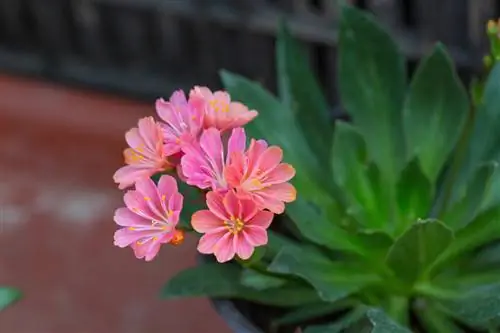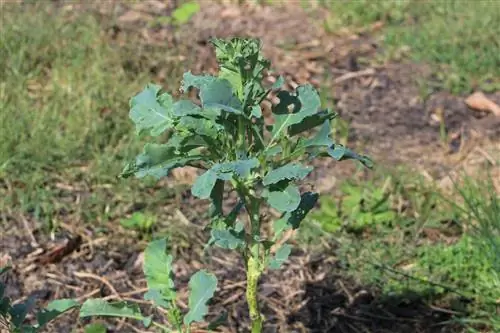- Author admin [email protected].
- Public 2023-12-16 16:46.
- Last modified 2025-01-23 11:22.
It was advertised in the garden center and seemed to be in great he alth. But when we get home, it becomes apparent after just a few weeks that the Dipladenia doesn't want to grow. Did something go wrong or why is this tropical climbing plant from South America not climbing?

For what reasons does Dipladenia not rank?
There are Dipladenia hybrids that were bred for balcony boxes and small pots forroom cultureand do not climb, but remaincompact. The failure of the Dipladenia to climb can also be due tocare errors, an unfavorablelocationor massivepest infestation.
What does Dipladenia need to climb?
A climbing Dipladenia needs aTank aid It is a climbing plant that can climb up various objects. If the Mandevilla does not have a climbing aid available, it will grow lying on the ground or hanging, depending on the location and variety. For example, an obelisk, a trellis or a trellis can be used as a climbing aid. The Dipladenia will wind its way up it with its tendrils.
Are all varieties of Dipladenia climbing plants?
Not all varieties of Dipladenia are climbing plants and grow tendrils. There are some varieties that prefer to grow hanging or compact. They were specially bred to be suitable as houseplants or for window boxes.
Can pests affect the growth of Dipladenia?
If a Dipladenia does not climb, but is one of the climbing specimens, a pest infestation may be thecause of the non-climbing. If dipladenias are cultivated indoors, the plant is sometimes weakened by pests such as spider mites during overwintering. Even outdoors, pests such as aphids can weaken the plant through their sucking activity. If the infestation is severe, the Dipladenia can even lose individual buds and not bloom.
What location does Dipladenia need to grow properly?
This dog poison plant needs asunny and warm location in order to grow well and therefore also to climb. As a houseplant, it prefers a bright spot by the window. In the pot on the balcony or terrace, the Dipladenia should get a lot of sun and overwinter from October.
What should you pay attention to when caring for Dipladenia?
In order for the Mandevilla to climb well, it needs strength in the form ofnutrientsandwaterFertilize the climbing plant regularly between March and August ! If there is a lack of water, the tension of the tendrils decreases. Therefore, the Dipladenia should be watered sufficiently. It is also recommended torepot it every one to two yearsso that its roots have enough space, and it should becut back.
Tip
Non-climbing dipladenias for small planters
Non-climbing dipladenias include the varieties 'Rio White', 'Jade Scarlet' and 'Jade White'. You can use these for balcony boxes, hanging baskets or as houseplants. These low, non-climbing varieties can even be found in flower beds.






